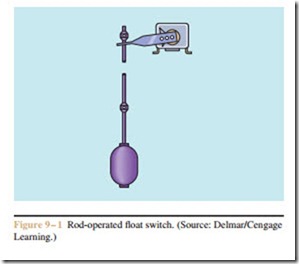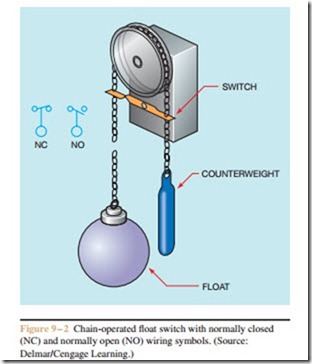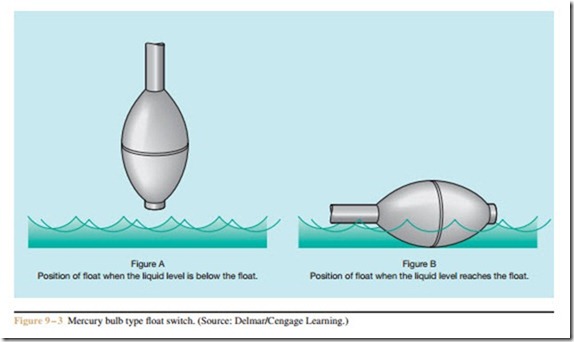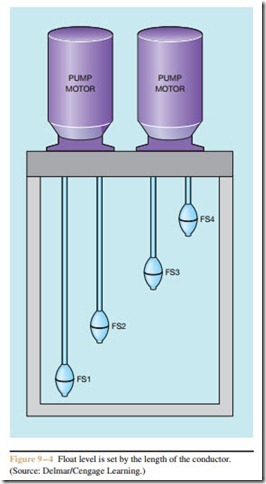A float switch is used when a pump motor must be started and stopped according to changes in the water (or other liquid) level in a tank or sump. Float switches are designed to provide automatic control of AC and DC pump motor magnetic starters and automatic direct control of light motor loads.
The operation of a float switch is controlled by the upward or downward movement of a float placed in a water tank. The float movement causes a rod- operated (Figure 9 – 1) or chain and counterweight (Figure 9 – 2) assembly to open or close electrical contacts. The float switch contacts may be either normally open or normally closed and may not be submerged. Float switches may be connected to a pump motor for tank or sump pumping operations or tank filling, de- pending on the contact arrangement.
Another float switch that has become increasingly pop- ular is the mercury bulb type of float switch. This type of float switch does not depend on a float rod or chain to operate. The mercury bulb switch appears as a rub- ber bulb connected to a conductor. A set of mercury contacts are located inside the bulb. When the liquid level is below the position of the bulb, it is suspended in a vertical position (Figure 9 – 3A). When the liquid level rises to the position of the bulb, it changes to a horizontal position (Figure 9 – 3B). This change of position changes the state of the contacts in the mer- cury switch.
Since the mercury bulb float switch does not have a differential setting as does the rod or chain type of float switch, it is necessary to use more than one mercury bulb float switch to control a pump motor. The differential level of the liquid is determined by sus- pending mercury bulb switches at different heights in the tank. Figure 9 – 4 illustrates the use of four mercury bulb type switches to operate two pump motors and provide a high liquid level alarm. The control



